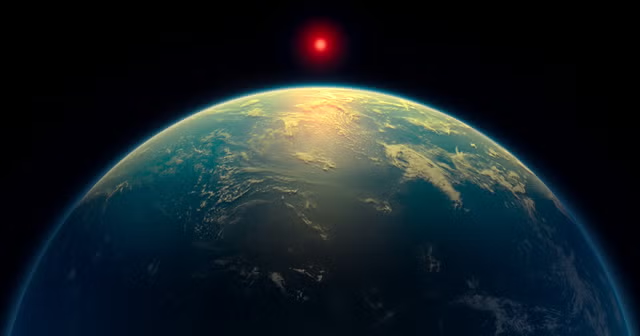
Astronomers uncover evidence of possible extraterrestrial life on distant planet
text_fieldsAstronomers have uncovered what could be the strongest evidence yet of extraterrestrial life beyond our solar system, with the James Webb Space Telescope detecting chemical traces of dimethyl sulfide (DMS) and dimethyl disulfide (DMDS) on the exoplanet K2-18 b, located 124 light years away from Earth.
These compounds, known to be produced by life on Earth, have sparked excitement among scientists, although they caution that the detection does not prove biological activity.
K2-18 b, a gas giant nearly nine times the mass of Earth and 2.6 times its size, orbits within the habitable zone of its cool red dwarf star, which may allow for liquid water to exist.
Previous observations in 2019 hinted at the presence of water vapor in its atmosphere, but follow-up studies in 2023 suggested the signal was methane, leading to debate over whether K2-18 b could truly be a habitable world. Despite this uncertainty, some scientists still believe the planet could possess an oceanic environment.
The latest findings, made as K2-18 b passed in front of its star, revealed the presence of DMS and DMDS in the planet’s atmosphere by analyzing the starlight filtered through it. These chemical signatures appeared in concentrations much higher than those found on Earth, with a statistical significance of 0.3%, though this does not yet meet the gold standard for physical discoveries.
While the detection brings humanity closer to answering whether we are alone in the universe, some researchers remain cautious, questioning whether the compounds could be produced by non-biological processes.
While DMS and DMDS are primarily produced by marine phytoplankton on Earth, there are alternative explanations for their presence on K2-18 b. Some scientists suggest that comets might have brought these compounds to the planet, although the required intensity of bombardment seems improbable, while others argue that volcanic activity, hydrothermal vents, or lightning storms could account for their presence. Despite these doubts, the results have nonetheless ignited renewed interest in the search for life beyond our solar system.
Although the conditions on K2-18 b remain a point of contention, with some scientists proposing that the planet could have oceans of magma or be a gas giant rather than an ocean-covered world, the detection of potential biosignatures represents a significant advancement in the study of distant exoplanets.
Researchers emphasize that this discovery, while not proof of extraterrestrial life, demonstrates the growing potential for future breakthroughs as technology improves, enabling scientists to analyze the chemical makeup of planets beyond our reach.
Despite the excitement, some experts remain skeptical, stressing that the burden of proof for claims of extraterrestrial life is exceptionally high. Nonetheless, the findings have made it clear that the search for life beyond Earth is entering a new phase, with the possibility of confirming or ruling out life on distant planets becoming ever more tangible.


















